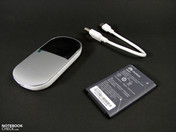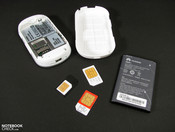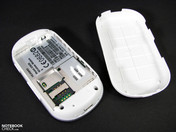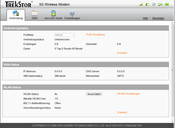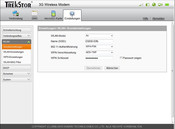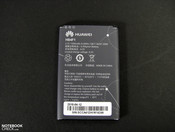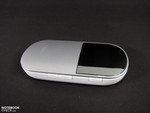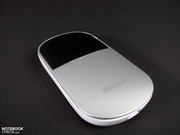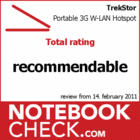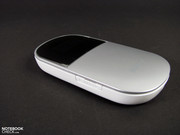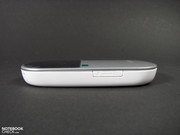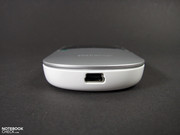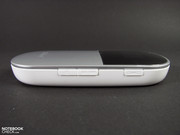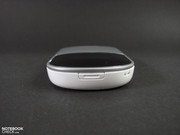Review Trekstor Portable UMTS (3G) WLAN Hotspot
Many people feel cut off from the rest of the world without internet access, since a lot of daily activities take place there. Internet banking, emails, chats, shopping and much more are becoming more and more popular via the World Wide Web. But you don't always have the necessary internet access at hand.
The accustomed connection is missed on vacation, on business trips or even in regions where there generally is no DSL available. Even if you choose to change to the alternative, UMTS, you need a suitable UMTS modem. While mobile phones and smartphones are all equipped with the necessary 3G modem nowadays, it's still absent in many tablets, netbooks and laptops. Although these devices are also available with this mobile broadband access in other configurations, the surcharge is usually steep. Retrofitting them is just as expensive since they usually don't have the required cables and antennas. Moreover, you are then tethered to this one device and aren't very flexible in the utilization. In return, the alternative UMTS stick is cheap to get and can be used with many various devices. However, it is also in danger of being broke off due to its protruding build.
A mobile UMTS hotspot, such as the test model from Trekstor for about 100 euros, is an external alternative that can serve several users at the same time. The small box sets up a connection to the internet via UMTS and distributes it to up to 5 devices via WLAN. Inside, a Huawei E5830 modem does its job. It can theoretically download up to 7.2 Mbit (HSDPA) and upload up to 5.76 Mbit/s. Even EDGE and GPRS are supported. How good the data rates of every UMTS modem is in practical use is strongly dependent on the selected network (ePlus, O2, T-Mobile and Vodafone) and the existing network quality and network capacity.
Unlike the WWAN modem, the incorporated WLAN doesn't reflect the latest technology and only supplies speeds according to the IEEE 802.11 b/g standard with a maximum of 54 Mbits/s. Although that is sufficient considering the data rate and intention, 802.11n could be an advantage at least in view of the WLAN range.
The initialization of the Hotspot is quickly possible after a short look in the well explained instruction manual. The device is connected to the notebook via USB for the first configuration. The on/off button has to be pressed for about 2 seconds (should prevent unintentional activation in the case), and then the drivers are installed automatically. Via the web interface, Web Partner, you can access the configuration desktop. Now you can comfortably set up WLAN, UMTS, modem, SIM card and a few more things. Unsecured WLAN can be used, but WPA-PSK or WPA2-PSK is recommendable. A Firewall is installed and WPS log is also supported. Standard passwords should be altered immediately during the first setup to prevent unauthorized access. Once everything is set up, a push of the button suffices to activate TrekStor's Hotspot.
The display informs you about the status of signal strength, network type, network provider, battery status, news and number of clients. The display automatically turns off after about 1 minute to keep the power consumption as low as possible.
Standard SIMs, known from mobile phones, fit in the SIM card slot. However, even micro SIMs, as known from iPad & co., can be used with an adapter. Although the modem automatically recognizes settings for the access point (APN) from the inserted SIM, the user name and password occasionally have to be corrected in case of niche providers.
As promised by Trekstor, we could connect 5 devices at the same time (3 notebooks, 1 tablet, 1 mobile phone). However we only used a maximum of three simultaneously. An HP Mini 5101 (Windows 7 HP 32bit), an HP Probook 6540b (Windows 7 Professional 64bit) and an iPad (iOs) were used. As long as only one device used the internet connection, we didn't notice any speed difference compared to a UMTS solo connection.
However, the UMTS access' data rate has to be split up when several consumers are connected. In this case, you are extremely dependent on how good the network connection to your mobile provider is. In our specific case, O2, Vodafone and T-Mobile were noticeably faster than ePlus. This can look completely different in other localities. Surfing was still possible on two devices. However, you'll have to count with slightly longer waiting times for sites to load. When we increased the number of clients to three, ePlus deteriorated evidently and was annoying with an uncomfortably slow presentation, while the others still supplied a still tolerable picture. Of course, more extensive downloads that block the access decently have an adverse effect on all. It's not possible to specify maximum data rates to single devices in the network.
We had a WLAN range of about 12 m in closed rooms and about 20 m in rooms without walls until the connection struggled with interruptions. Utilization without battery via USB on the notebook wasn't possible. We could use the WLAN Hotspot for about 4 hours with the battery.
Verdict
Trekstor's Portable UMTS WLAN Hotspot is easy to initialize, offers up to date security features, good configuration options and a viable WLAN range.
The supported HSPA speeds are contemporary. To what extent they can be exploited in practical use is still very dependent on the solitary available mobile network conditions, though. Thus, a common, simultaneous utilization is only possible with restrictions.
Nevertheless, the Hotspot is well suitable for "internet everywhere" and / or wireless upgrading of UMTS-free portable computers and can also be reused with new acquisitions without problems.




